
7 minute read
Road Trip from the High Tatras to Budapest
The 288 km route through central Slovakia, from the High Tatras to Budapest, is one of the most beautiful in Europe. Starting in the highest peaks of the Carpathians, taking in breathtaking landscapes and enchanting towns and villages along the way before arriving in Budapest, this road trip combines the serenity of the mountains with the bright lights of the city.
Slovakia – land of majestic mountains and medieval towns
BY SLAVKA KOSC*
Journeying through central Slovakia, starting out from the majestic High Tatras, with the vibrant city of Budapest as my finishing point, was my idea of the perfect road trip! The 288 kmlong route takes four hours to drive, but I took my time. I wanted to enjoy the picturesque towns rich in medieval landmarks, intact wooden folk architecture, hilltop castles and mysterious caves that pave the way.
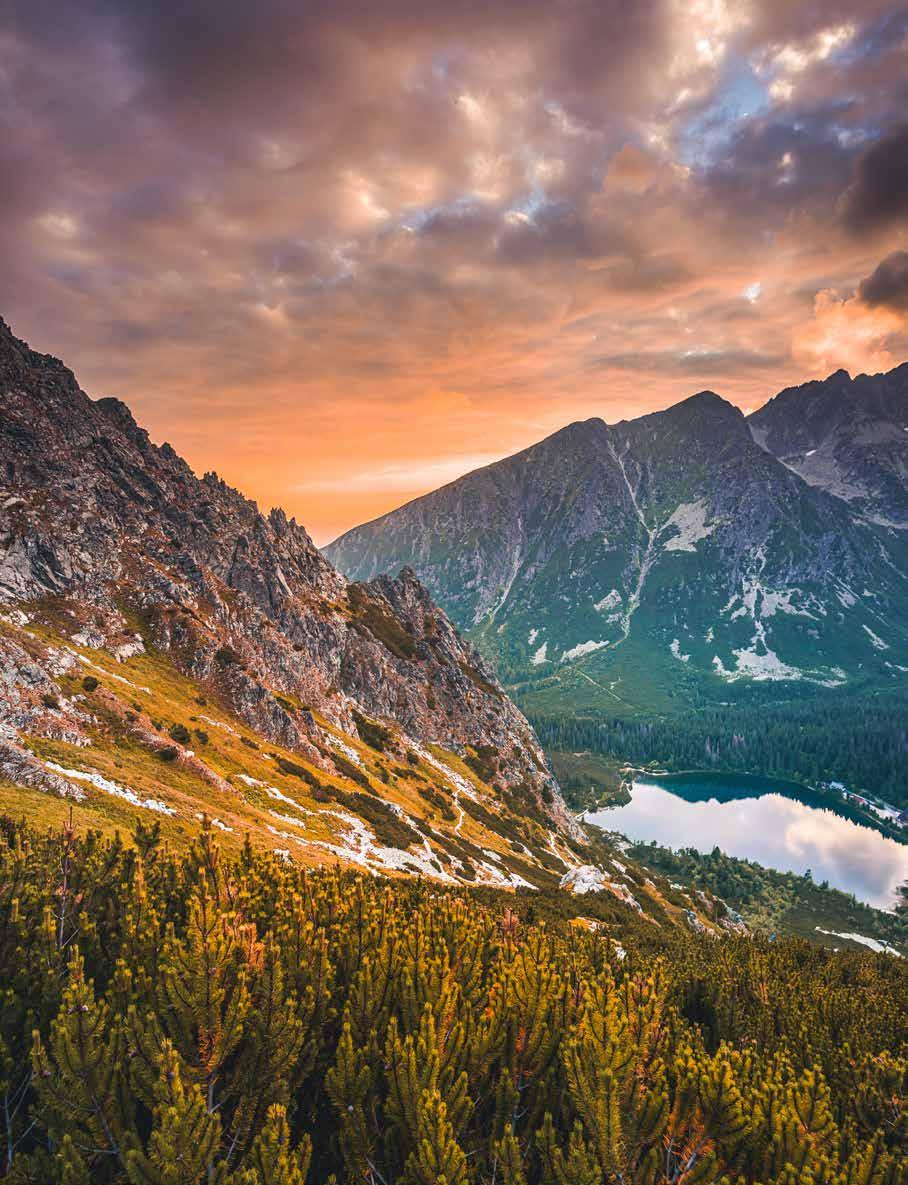
HIGH TATRAS - A UNESCO Biosphere Reserve since 1993, the High Tatras are the highest mountains in the Carpathian Mountain Range as well as the smallest alpine mountains in the world. Their spectacular year-round beauty, along with a myriad of recreational activities, attract locals as well as visitors from neighbouring countries.
After I’d explored the highest Slovak mountains, hiked scenic trails, met a Sherpa carrying supplies to high-altitude chalets and enjoyed spectacular views from the Lomnický Peak, I descended to the valleys. There I discovered more of the charming Slovak hinterland. The country roads lead through several protected natural areas, two UNESCO World Heritage sites and numerous pretty villages. I took my time, stopping to take in the rural beauty. These are some of my favourite places.
DEMÄNOVSKÁ VALLEY CAVES

DEMÄNOVSKÁ CAVES. Slovakia is home to over 1000 caves. Only 13 of them are open to the public. The unique Demänovská caves are conveniently located next to each other and are easy to visit.
The Liptov Region is home to many gems, among them the Demänovská Cave of Liberty and the Demänovská Ice Cave, located next to each other. The caves are part of a massive underground karst system and feature rich dripstone decoration, flowstone cascades, unique fauna, cave lakes and a subterranean river, as well as permanent ice formations in the ice cave.
ORAVA CASTLE

ORAVA CASTLE. Gradually built from the 13th century, undergoing style changes with every epoch, Orava Castle served as a fortress against invasions and an aristocratic seat. Today it is one of the most visited castles in Slovakia.
A short drive north from Ružomberok, the mighty Orava Castle is a must-see on any Slovakian trip. I will never forget the imposing vertical structure, balanced on a steep rock and overlooking the rolling hills cut by the shallow Orava River. A much-loved filming location, this medieval fortress has seen everything including princesses and vampires.
VLKOLÍNEC
Visiting the UNESCO-listed wooden village of Vlkolínec is like stepping into a fairy tale. The long, narrow log houses, typical of most of Slovakia, look as they did seven centuries ago. Although this tiny mountain village is an open-air museum, people still live there.
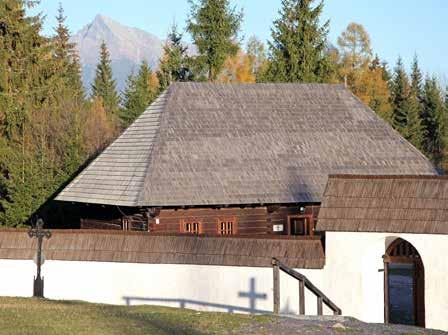
PRIBYLINA OPEN AIR FOLK MUSEUM is a great place to stop on the way to the High Tatras. The ‘skansen’ is a perfect example of rural life in the Liptov Region during the previous three centuries.
BANSKÁ BYSTRICA
Off the main tourist route, the central Slovakian city of Banská Bystrica is best known for its excellent hiking in the surrounding mountains as well as its serene city life centred on SNP Square. I recommend looking up as you walk through the main square to appreciate the pastel hues of the Renaissance and Baroque facades, and climbing up the leaning bell tower for the best view. Be sure to stop by one of the coffee shops selling delectable cakes and lemonades.

Just north of Banská Bystrica, Špania Dolina is one of the most historic villages in Slovakia. It’s famous for its copper and silver mining history and well-preserved mining architecture, as well as for its sought-after bobbin lace.
BANSKÁ ŠTIAVNICA

The UNESCO-listed town of Banská Štiavnica has pleasant walks along its narrow, steep, winding streets. A former centre of gold and silver mining, it is now a favourite trip destination for Slovaks as well as visitors.
Spread across the green forested sides of the Štiavnica Hills, Banská Štiavnica was once a rich and bustling mining metropolis. Today, the medieval town is enjoying a rebirth as one of central Slovakia’s tourist magnets. Multiple Gothic and Renaissance landmarks, two castles, well-kept houses and hilly views contribute to its sleepy charm. I climbed up steep Calvary Hill to see its notable church complex and stunning panorama. I can highly recommend Erb Restaurant and Brewery for tasty local dishes and fine beer. I also enjoyed the excellent coffee and cakes at elegantly quirky Divná Pani.
As I crossed the Slovak-Hungarian border, I noticed the countryside becoming flat rather than hilly, and I began to focus on Budapest: the Danube beauty that ruled over Slovakia and central-southeastern Europe for over a thousand years.
* Slavka Kosc is a Slovak freelance travel writer and videographer who passionately depicts the beauty of Central Europe.
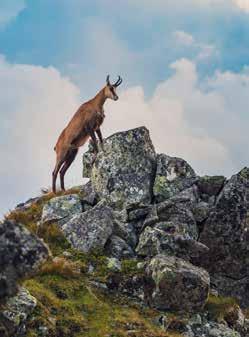
TATRA CHAMOIS is endemic to the High Tatras and is a critically endangered species with fewer than 1400 individuals alive. They live strictly on the rocky peaks, never entering the forested areas, to avoid wolves and other predators.

Traditional folk costume of the Hont Region. In Slovakia, almost every village has its own style of folk costumes. They all feature intricate, colourful embroidery, layers of fabric and tons of ribbons and lace.
Grand Hotel Kempinski High Tatras, Slovakia

A complex of three historic buildings, located on the shore of the Štrbské Pleso mountain lake, with great views of the High Tatras peaks. Take a look at our featured road trip through central Slovakia from the High Tatras to Budapest along one of Europe’s most scenic routes. Our hotels will provide the anchors for your driving adventure, and a restful night’s sleep. Find out more at www.kempinski.com/en/hotels/your-5-star-road-trip/
GRAND HOTEL KEMPINSKI HIGH TATRAS, KÚPEĽNÁ 6, 059 85 ŠTRBA ŠTRBSKÉ PLESO, SLOVAKIA. KEMPINSKI.COM/GRAND-HOTEL-HIGH-TATRAS +421 52 3262 222
Budapest: a vibrant city of contrasts
BY GRETCHEN KESSLER*
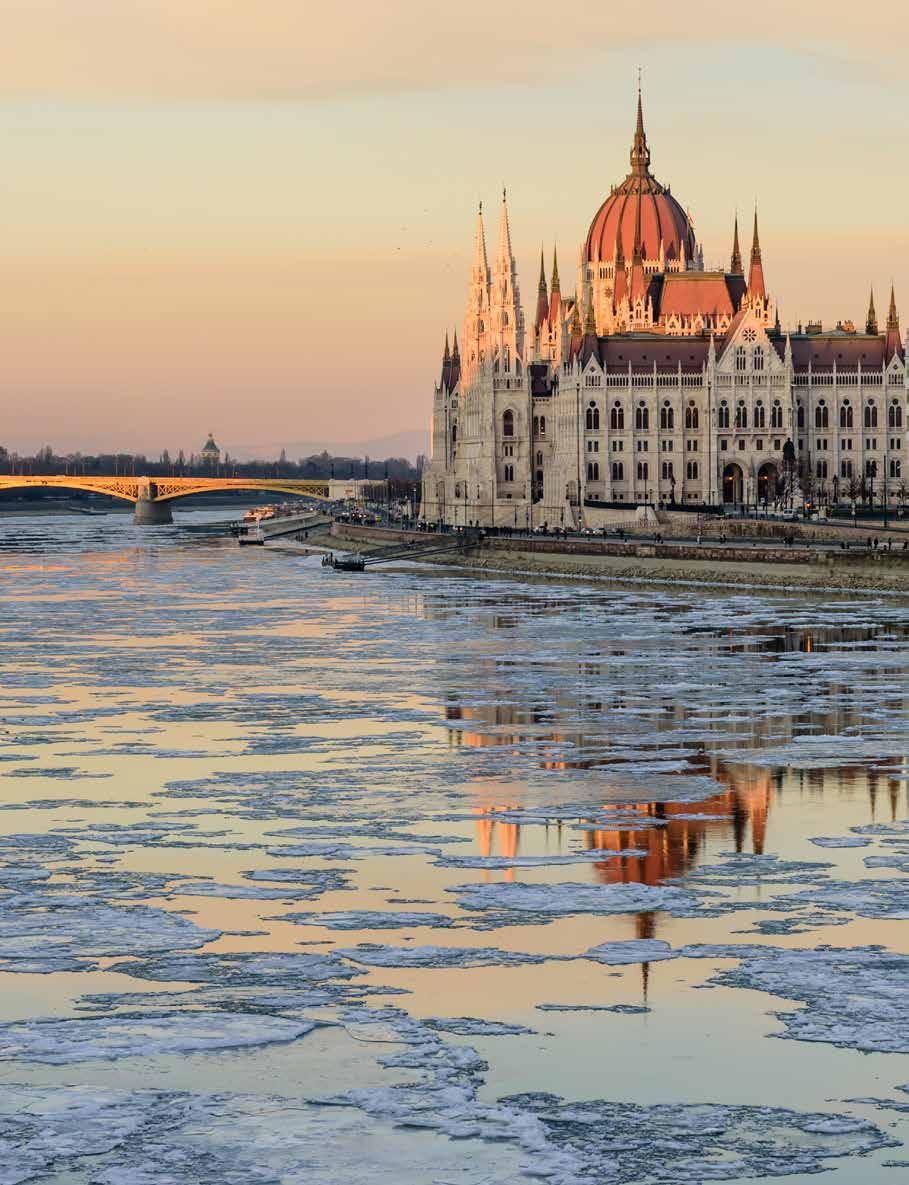
Located on the banks of the Danube, Budapest’s Gothic Revival-style Parliament building is one of Hungary’s most notable landmarks and a popular tourist destination. Completed in 1904, it remains the largest structure in Hungary. Did you know that only half the building is used by legislators? The other half is purely for ceremonies, conferences and guided tours.
Romantic and historic, contemporary and captivating. Budapest is a city of palaces and rooftop bars, thermal baths, antique oddities and couture shopping. It’s easy to see why visiting authors have called Budapest a prime spot for dreams and ‘Europe’s most underrated big city’. Try traditional Hungarian treats, party till dawn in the famous ruin bars and soak in 36ºc waters once enjoyed by the ancient Romans.
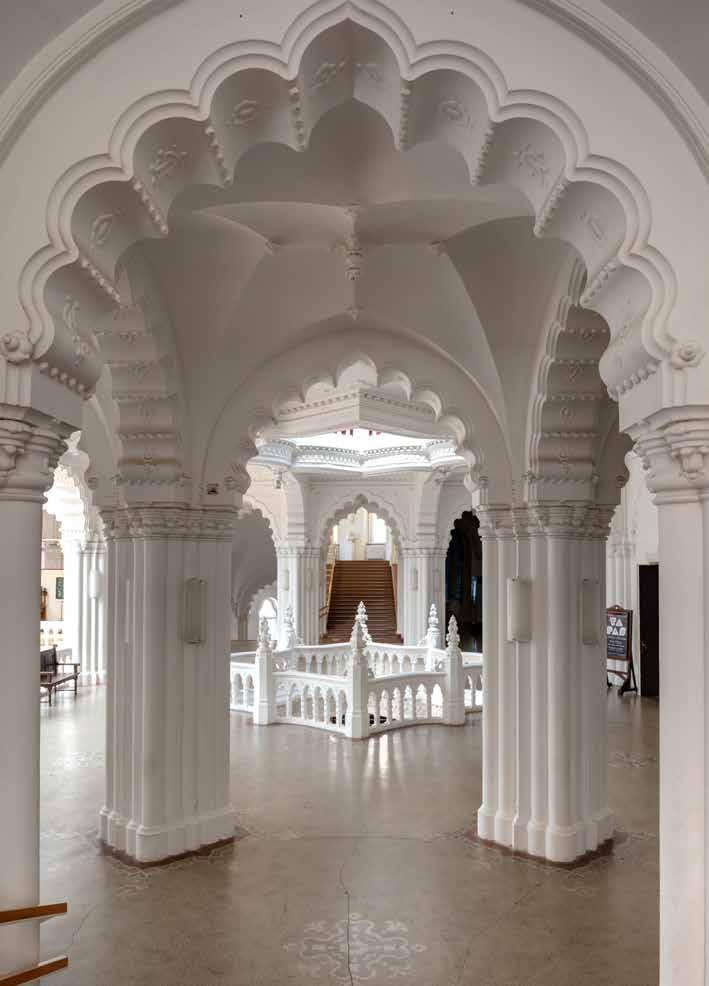
Art Nouveau was extremely popular in Hungary in the 19th century, and no finer example can be found than the Museum of Applied Arts. Completed in 1896, it is considered the crowning masterpiece of genius architect Ödön Lechner. In fact, the city is full of Art Nouveau buildings, such as the New Theatre on Paulay Ede Street and the Gellért Thermal Baths on Kelenhegyi.
Foodies

Budapest is full of wonderful restaurants and cafes, but the very best are local secrets. Head to Macska on Bérkocsis Street for a bohemian atmosphere and amazing vegetarian food. Macska is only open on weekdays, and it’s always packed. Taste Hungarian specialities at the Grand Market Hall, where culinary tours serve cheese-covered lángos and palinka - a fiery local brandy. If you want to explore, walk down café-lined Krúdy Gyula Street, where outdoor seating spills on to the pavement.
Eclectic

The Jewish District is Budapest’s most colourful and diverse neighbourhood, with huge murals on the walls and the famous ruin bars inviting guests to drink beneath the stars. Check out the popular ruin bar Szimpla, with its ramshackle charm, and return on Saturday morning for the pop-up flea market. Book lovers should earmark Massolit, the largest English-language book store in the city, which doubles as a coffee shop. Gozsdu Udvar is one of the most historic areas, transformed in modern times with fine dining and exciting nightlife. On the weekends local artists sell their wares and vintage clothing shops like Ludovika and Szputnyik are within walking distance.


Health & nature
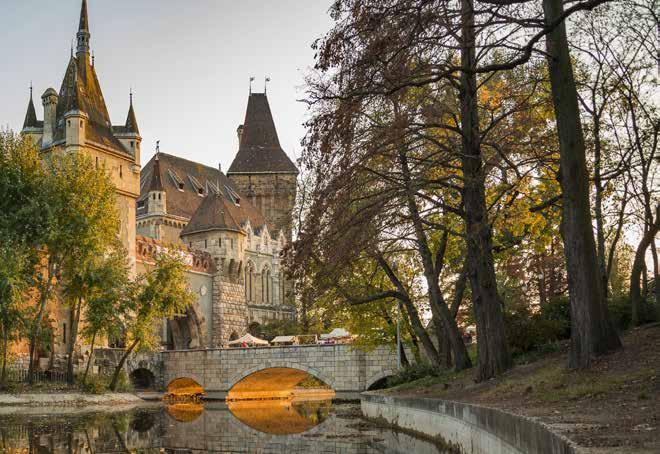
Nestled within the bustling city is the green escape of Városliget Park, complete with a castle, open-air bar and a surrounding lake which transforms in winter into Europe's largest ice-skating rink. The castle grounds are a popular meeting spot for locals, with festivals and concerts. Check out the famous Széchenyi Thermal Baths, also in the park, offering spa treatments and the heated outdoor pools popular with Hungarians. Every Saturday night the spectacular ‘sparty’ begins, with music, drinks and light shows until 3am.
Where East meets West
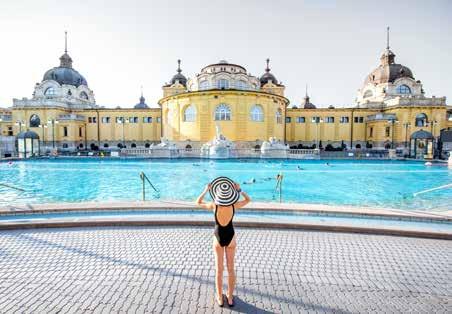
Walk down Bartók Béla, with its hip bistros and cocktail bars, to experience the culture, life and vibrancy of modern Budapest. Or step back in time on Margaret Island, where the now ruined 13th century convent once housed the King’s daughter. In the evening, head to the city centre and St István Square, which fills with local residents strolling through the city, the magnetic Basilica in the background.
*Gretchen Kessler is a US-born, Europe-dwelling travel writer who likes wine, train journeys, and passport stamps. She lives in Budapest.
Kempinski Hotel Corvinus Budapest

The hotel stands directly opposite the Budapest Eye. The city’s main shopping streets and tourist attractions are all within walking distance. Take a look at our featured road trip through central Slovakia from the High Tatras to Budapest along one of Europe’s most scenic routes. Our hotels will provide the anchors for your driving adventure, and a restful night’s sleep. Find out more at www.kempinski.com/en/hotels/your-5-star-road-trip/
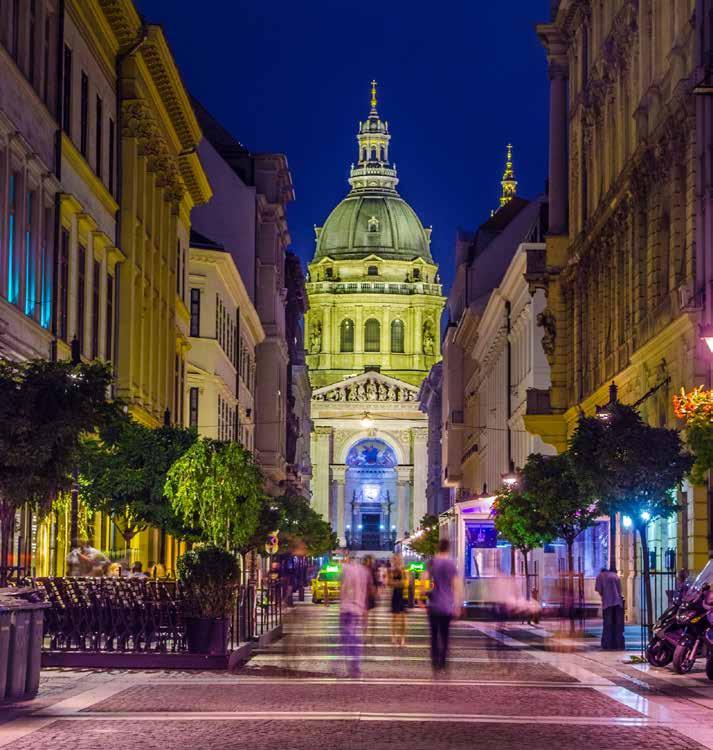
KEMPINSKI HOTEL CORVINUS BUDAPEST, ERZSÉBET TÉR 7-8, 1051 BUDAPEST, HUNGARY. KEMPINSKI.COM/BUDAPEST +36 1 429 3777









